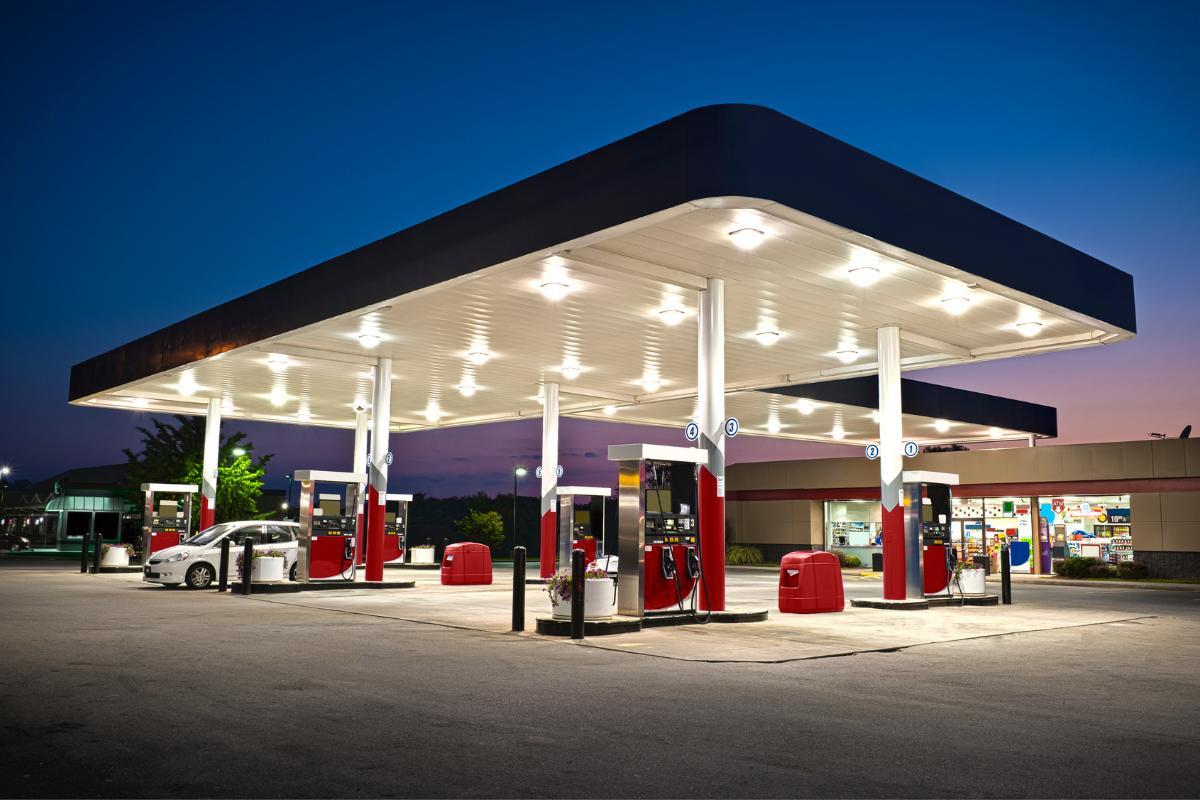
Gas stations are more than just places to fill up your tank. They play a crucial role in our daily lives, offering convenience, sustenance, and sometimes even a quick break from long drives. Did you know that the first gas station opened in 1905 in St. Louis, Missouri? Or that there are over 150,000 gas stations across the United States today? These hubs of activity have fascinating histories, quirky facts, and surprising statistics that many people overlook. From the evolution of fuel types to the rise of electric charging stations, gas stations have adapted to meet the changing needs of drivers. Ready to learn more about these essential stops on your journey? Buckle up and let's get started!
The History of Gas Stations
Gas stations have a fascinating history that dates back to the early 20th century. Here are some intriguing facts about their evolution.
-
The first gas station opened in 1905 in St. Louis, Missouri. It was operated by the Automobile Gasoline Company.
-
Early gas stations were known as "filling stations" and often sold other goods like groceries and hardware.
-
By the 1920s, gas stations began to standardize their appearance with recognizable logos and uniform designs.
-
The concept of self-service gas stations was introduced in the 1940s but didn't become popular until the 1970s.
Gas Station Design and Features
Modern gas stations are designed for convenience and efficiency. Let's explore some interesting aspects of their design and features.
-
Most gas stations have canopies over the pumps to protect customers from the elements.
-
Many stations now offer additional services like car washes, air pumps, and vacuum stations.
-
Convenience stores attached to gas stations often generate more profit than the fuel sales themselves.
-
Some gas stations are experimenting with eco-friendly designs, including solar panels and green roofs.
Fuel Types and Innovations
The types of fuel available at gas stations have evolved over the years. Here are some facts about the different fuels and innovations in the industry.
-
Gasoline is the most common fuel sold at gas stations, but many also offer diesel, ethanol blends, and even electric charging stations.
-
Ethanol-blended fuels, like E10 and E85, are becoming more popular due to their lower environmental impact.
-
Some gas stations now offer hydrogen fuel for fuel cell vehicles, although these are still relatively rare.
-
Electric vehicle charging stations are becoming more common, with some gas stations offering fast-charging options.
Gas Station Economics
The economics of running a gas station can be complex. Here are some facts about the financial aspects of gas stations.
-
The profit margin on fuel sales is relatively low, often just a few cents per gallon.
-
Convenience store items, such as snacks and drinks, typically have much higher profit margins.
-
Gas stations often rely on high volume sales to stay profitable.
-
Many gas stations are independently owned and operated, even if they carry a major brand's logo.
Safety and Regulations
Safety is a top priority at gas stations. Here are some important facts about the safety measures and regulations in place.
-
Gas stations are required to have fire suppression systems, including fire extinguishers and automatic shut-off valves.
-
Underground storage tanks must be regularly inspected and maintained to prevent leaks and contamination.
-
Many gas stations have security cameras and bright lighting to deter crime.
-
Employees are trained in emergency procedures, including how to handle fuel spills and fires.
Fun and Unusual Facts
Gas stations have some fun and unusual aspects that might surprise you. Here are a few quirky facts.
-
The world's largest gas station is Buc-ee's in New Braunfels, Texas, with 120 fuel pumps and a 68,000 square foot convenience store.
-
Some gas stations have become famous for their unique architecture, like the Teapot Dome Service Station in Zillah, Washington.
-
In Japan, some gas stations have attendants who bow to customers as they arrive and leave.
-
The first drive-in gas station was opened by Gulf Oil in Pittsburgh, Pennsylvania, in 1913.
-
Some gas stations in Europe offer gourmet food and high-end coffee, making them popular stops for travelers.
The Final Pump
Gas stations are more than just places to fill up your tank. They’re hubs of history, innovation, and even a bit of quirkiness. From the first gas station in Pittsburgh to the rise of electric vehicle charging stations, these spots have evolved alongside our transportation needs. They’ve seen the introduction of self-service pumps, the growth of convenience stores, and even the occasional oddity like a gas station shaped like a teapot.
Understanding these facts can make your next stop at the pump a bit more interesting. Whether you’re grabbing a snack, fueling up for a road trip, or just passing by, remember there’s a lot more going on than meets the eye. Gas stations have come a long way and will keep evolving as our world changes. So next time you’re at one, take a moment to appreciate the journey.
Was this page helpful?
Our commitment to delivering trustworthy and engaging content is at the heart of what we do. Each fact on our site is contributed by real users like you, bringing a wealth of diverse insights and information. To ensure the highest standards of accuracy and reliability, our dedicated editors meticulously review each submission. This process guarantees that the facts we share are not only fascinating but also credible. Trust in our commitment to quality and authenticity as you explore and learn with us.
